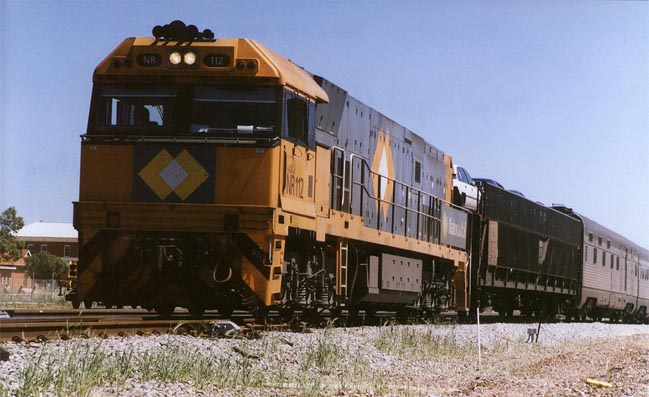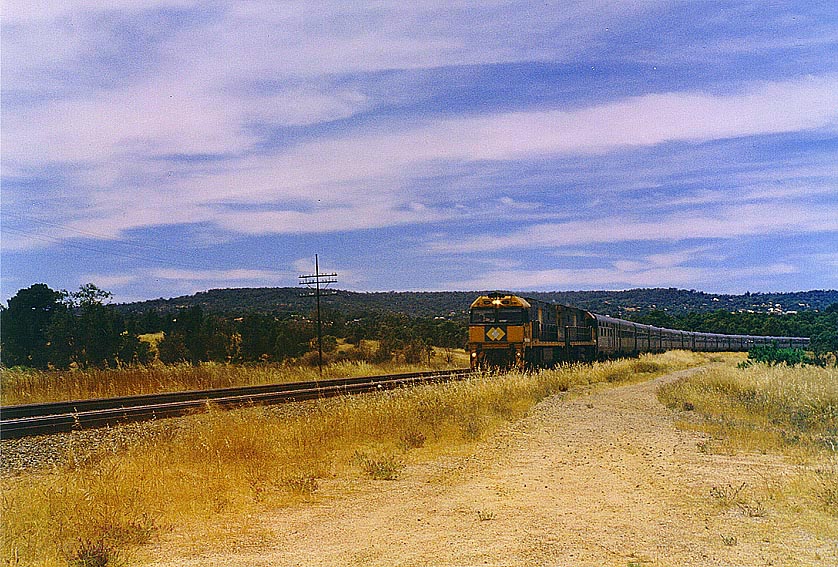From the mountain to the ocean, from the
city to the countryside, from the fertile place to arid desert. That's how
to describe the trip in Indian Pacific Train. It's journey started from dowtown
Sydney, which is a big city. To mountain, which sometimes looked like if the
train is above the cloud. Then to the lush countryside, then seaside town,
then desert, then back to lush countryside, then back again to the city. It's
all in the same journey and in the same train!
The Indian Pacific, was introduced in 1970,
when the standard gauge line between Perth and Sydney was established and
the railway line between Perth to Kalgoorlie, and Port Piree to Broken Hill
was regauged to 1435mm.
This made them as the only train (at the
moment/claimed by Australians) which ran between East and West of the continent.
Although once, America used to have the similar service which ran between
Los Angeles and New York. And there is a similar service in Canada which rans
between Halifax and Vancouver.
But in the future, there will be another
train which will be the only train that ran between North and South of the
continent. That is The Ghan (The Indian Pacific's twin sister) which will
ran between Adelaide and Darwin. The service will commence in 2004.
 |
NR112 working
at the head of Indian Pacific Train, near Midland Station. |
 |
The same train, but this time its already
in the distance. The Striling range is visible in the background, and
the train has to deal with steep grade shortly after this.
The empty ground in front of me is
used to be the Midland Station. But it was demolished in 1960s. The new
one is several hundred metres behind me.
|
 |
NR28 approaching East Guildford Station
with Indian Pacific Train.
Note the complicated dual gauge points.
|
 |
The same train is viewed as it passed
through at speed.
I think, the car drivers thought I
was mad for standing in front of them, and taking this picture!!
|
 |
The similar
angle with NR28 photo above. Unless this time it's a doulbe headed Indian
Pacific. Pulled by indigenous liveried NR30 and NR52. |
 |
Another view of double headed IP. The
details of indigenous livery in NR 30 is clearly visible.
This train was pulling the 'Centenary
of Federation' celebration train, from Adelaide to Perth. As there is
a big party in the East Perth station behind the train.
|
 |
A view of NR52,
behind the NR30. This loco is nicknamed 'Pizza' by its crew. And you know
why.. |
 |
A narrow gauge
Perth suburban train passed the Indian Pacific train. |
 |
A Father and his child looked at the
NR52 loco. You can see the detail of the livery from this photo.
Nowaday, its impossible to get near
like this, as the platform has been fenced off, since September 11 tragedy.
|
 |
NR121 approaching
from Midland station (behind the fence). |
 |
A closer look of NR121.
The loco was once numbered as NR3.
But after a tragic accident, on which both of its drivers killed after
the cab was crushed in an accident, the loco was rebuilt, and renumbered
NR121.
|
 |
The overhead view of approaching Indian
Pacific. The white roofed building to the right is new Midland Station,
although it was opened in 1960s.
Judging by the fresh gravel, the new
standard gauge line near the station is just recently opened.
|
 |
An Indian Pacific train passed a bridge
on Swan River.
This must be the most beautiful place
to shot this train in Perth, ever! As it is located in the park and beside
the river.
|
 |
Another color scheme of an NR. Note
the green hood. It's officially called "Trailerrail' livery.
The 'trailer rail' service is a service
where the road trailer were temporarily fitted with train bogie and ran
on railway line, instead of road. This loco is usually used for this service.
|
 |
Last but probably the least interesting
locomotive color scheme for Indian Pacific train.
The dark grey color give an impression
of gloomy and unglamorous scheme. A stark contrast to a luxurious train
like Indian Pacific.
|
 |
This Indian Pacific train is the last
that left Perth in 2001.
And somewhat, this is the last year
of National Rail's full operation. In 2002, the company who own the locomotive
in this picture was sold to a private company and renamed "Pacific
National".
|